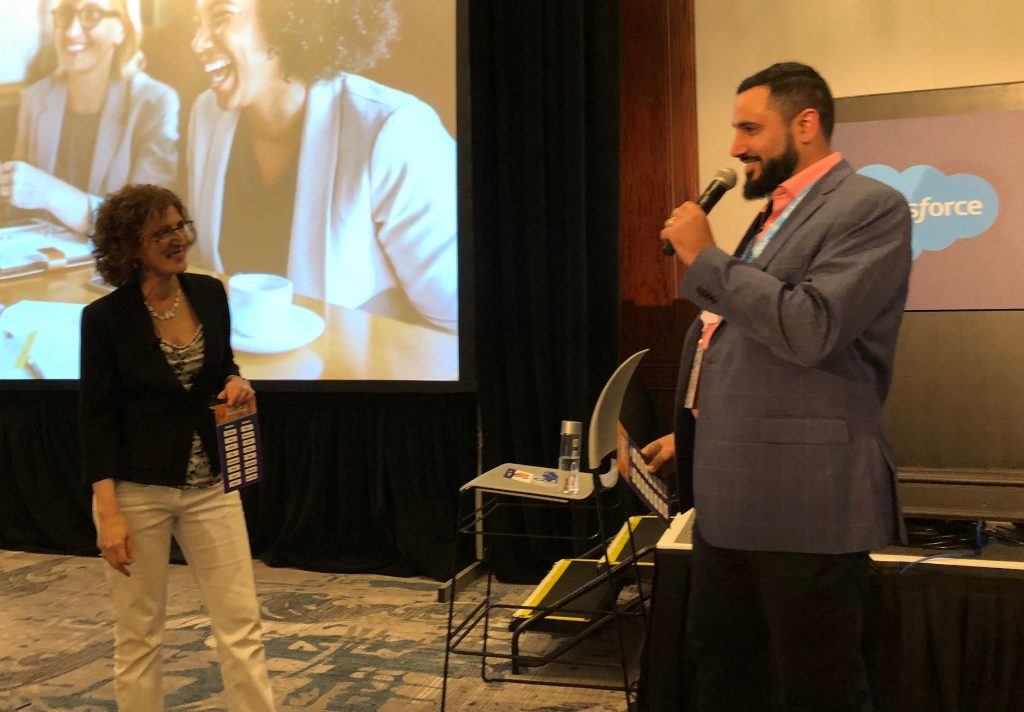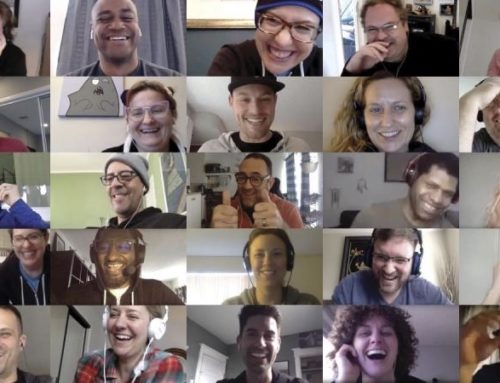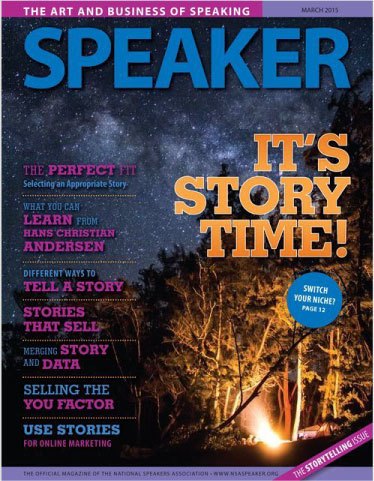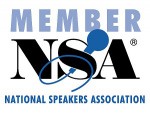Here’s a question for you, which US city increases its population by 20% once a year for an entire week? If you knew that the answer is San Francisco, then you probably also know about Dreamforce, the annual technology conference hosted by Salesforce.com since 2003.
Dreamforce brings together well-known speakers, performers and tech industry pioneers. This year’s conference featured Al Gore, Arianna Huffington, Deepak Chopra and a surprise appearance by Janet Jackson. People from across industries attend to learn about new products, participate in training sessions, hear thought leadership and network with peers.
I was lucky enough to have been invited to speak at this year’s conference in partnership with sponsor American Express. They hosted me for a session designed to inform attendees on how to get seen and be heard at work. After my session, I got to meet eight conference delegates for mini coaching sessions at the their onsite expo booth.
Ask the Coach

It was fascinating to hear the range of questions and issues they face. Here’s a small sample from three of my conversations
I’m naturally a little bit reserved and have a hard time speaking up in groups. How do I get my voice heard more during meetings?
Over the years many executives have told me that they are very comfortable during one-on-one interactions, but when four or more people are in the room, they don’t know what to say. I’ve encountered both C-suite execs that are challenged with this, as well as more junior folks.
One thing that holds people back from contributing is the belief that the only reason to speak up during a meeting is to say something new that hasn’t already been said. This view holds that a meeting is only about WHAT is being said, not HOW it’s being discussed.
I coach my clients to understand that they can have a positive impact on the meeting’s flow, and their own brand, by using the following techniques:
Paraphrase
Summarize back to the group something someone else has said. The result of this method is that it reinforces the key message you think is important in the meeting.
It also helps everyone remember what’s being discussed. Research shows that it takes a minimum of three and as many as eight times to hear a message before it sticks. You can be the reinforcer. You help others remember what is important.
Endorse
Compliment something someone else just said. The outcome of this technique is that it builds good relationships, especially with the individual that has spoken first.
At the same time it builds your brand. It lets the group know that you are someone who notices and acknowledges others.
“(Name of colleague), I hadn’t thought about it quite that way before, what a great perspective. Thanks for sharing that.”
Scaffold
Take the best thing that is going on in the discussion and build on it. Again, the goal of this is to reinforce a key message you think is important.
“I really like the idea of X. Perhaps we can expand it by adding Y too.”
Get In Early
Many people I’ve coached find that if they speak within the first five minutes of a meeting it’s easier to contribute later on. If they settle into listening mode too soon they find it difficult to get going.
With this in mind, challenge yourself to say something—anything—within the first few minutes of the meeting. This will break the ice and help you feel more comfortable when you DO actually have something to say!
It also reminds your colleagues that you’re there. If you attend too many meetings without contributing anything, you become invisible. And that’s not good for your personal brand at all.
If speaking up is an area of development for you, challenge yourself to try one of these approaches at your next meeting.
I hate networking. I never know how to answer the question: So, what do you do?
Lots of people have a hard time figuring out how to talk about themselves. They fear that what they do for a living will either be uninteresting—or too complicated—to explain to others.
What I’ve discovered is quite often they are the very ones making it sound uninteresting and complicated. I was once asked to coach a Private Banker on his elevator speech. Here’s what he had been saying:
I’m a Private Banker with 15 years of experience working with high net worth clients providing investment management services. My bank offers a full suite of wealth management, trust and estate services. We customize solutions to meet our customer’s needs.
While this may explain what he does, it doesn’t differentiate him from every other Private Banker out there. And it certainly doesn’t build a relationship—which is the entire point of networking.
I recommended he eliminate the business jargon and make his introduction more personal. Now his story sounds like this:
I’ve been a private banker for over 15 years, but when I was a kid I wanted to be Sherlock Holmes. Who knew that as a banker I’d get to think like a detective everyday. Clients come to me with their financial problems and I solve the mystery of where their money is going and how to invest it better for their future.
There are three elements to crafting a good networking introduction. I think of it as a formula:
Your Role + The problem you are helping your customers solve + something personal = the answer to: So what do you do?
Here’s some prompts for deciding what personal element you can include in your next networking speech:
- What I love most about my job is _______ because _______.
- Even though I’m a _______, I think about my job like a _______ (Architect, Psychiatrist, Firefighter, Football coach, Painter etc…) because _______.
- When I was a kid I was good at _______, so it’s not surprising I went into _______.
I have a hard time with small talk. I never know what to say
This concern is thematically linked to the one above. People put pressure on themselves to be smart and pithy when they are meeting a stranger for the first time. This misses the point of small talk.
The point of small talk it to get to know someone so that a relationship might develop. The best way to get to know someone is to learn to ask good questions; questions that will prompt an interesting conversation.
An easy way to start is to ask a question about the most obvious thing you have in common. In this case, it was the Dreamforce conference itself.
- What was the last session you attended? What the most interesting thing about it?
- Where are you going next? Why did that catch your eye?
- Have you attended the conference before? How is this one different than previous years?
Other general questions I’ve had success with are:
- How did you get into doing what you’re currently doing?
- I travel a lot for work, what’s the best thing you’ve found to deal with the jetlag.
- This is my first time in (name of city), what’s your favorite thing to do here? Cool, why?
It’s important to share your point of view and experiences too. Otherwise, the conversation will start to feel like an interrogation. One way to do that is to front load your question by disclosing something personal about yourself.
Note that I said personal, not private. One of the reasons some people have a hard time with small talk is that they confuse these two categories.
Personal things that I’m comfortable talking to strangers about are: I grew up in Michigan, I’m married, it was my brother’s idea that I could use my acting experience, and understanding of stage presence, to help people improve their executive presence.
Things that are too private might make a stranger feel uncomfortable upon a first meeting. No one wants to hear that you are suffering from diarrhea because of the spicy meal you ate last night, or that you’re thinking of divorcing your spouse.
I had a very interesting chat on day four of Dreamforce about serving on a jury. It’s a bit of a random topic to talk about at a tech conference, but we landed on it because I had just texted home. I shared with the woman I was talking with that my husband had just been dismissed from jury duty.
Turns out she sat on a jury years before. It was fascinating to hear the details of the case and what it was like in the jury room deciding if the defendant was guilty or not.
We exchanged business cards and as I said goodbye she said: I’d forgotten all about that case. Thank you. That was fun to remember.
Small talk can help someone remember something fun from his or her life. And that’s the point of it. It’s not about you having something brilliant to say, it’s about connecting with the person standing in right front of you, so they’ll want to reconnect with you again in the future.
I’m personally looking forward to reconnecting with Dreamforce in 2019. The content was valuable, the conversations were interesting, and San Francisco is pretty spectacular—even when it has 20% more people than usual.
If you didn’t get the chance to attend this year’s Dreamforce, or missed a particular session, American Express had recaps created from some of the most insightful sessions at the conference you can get the notes here.
















